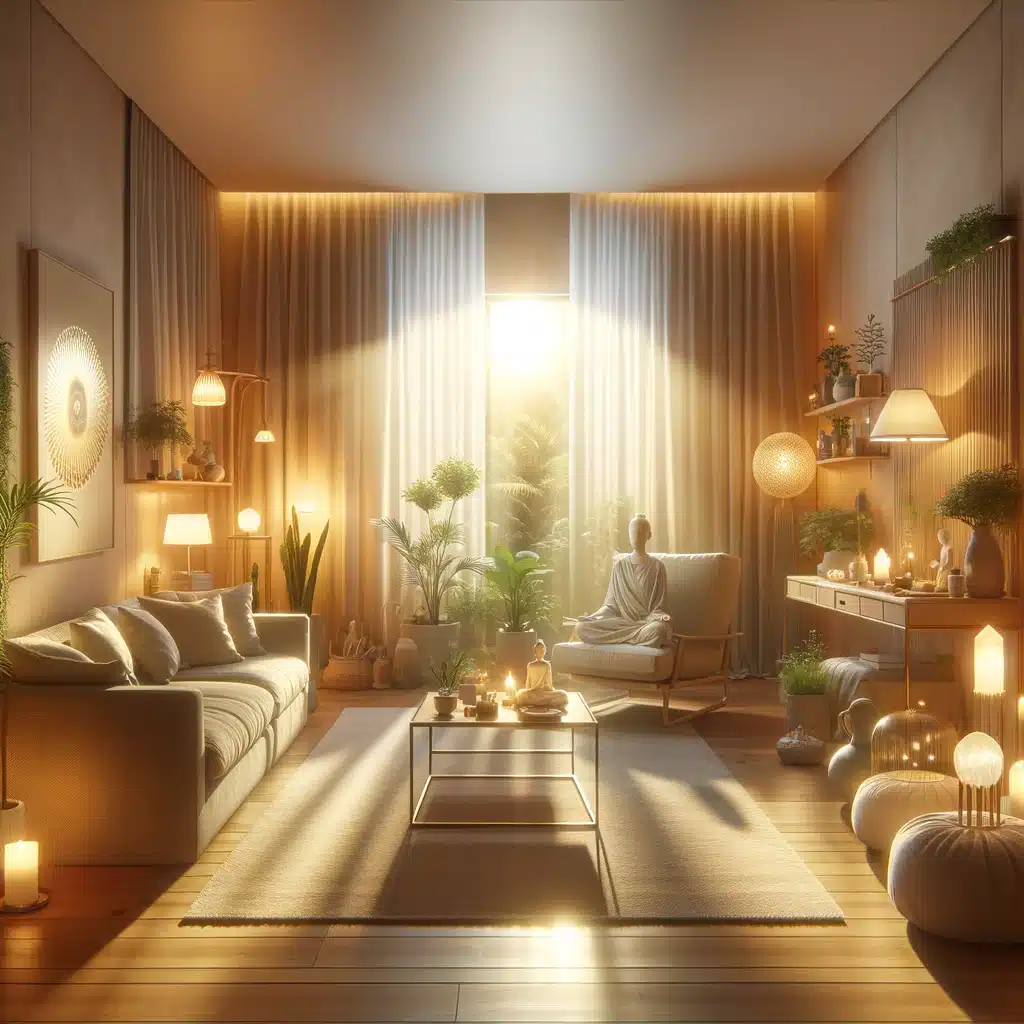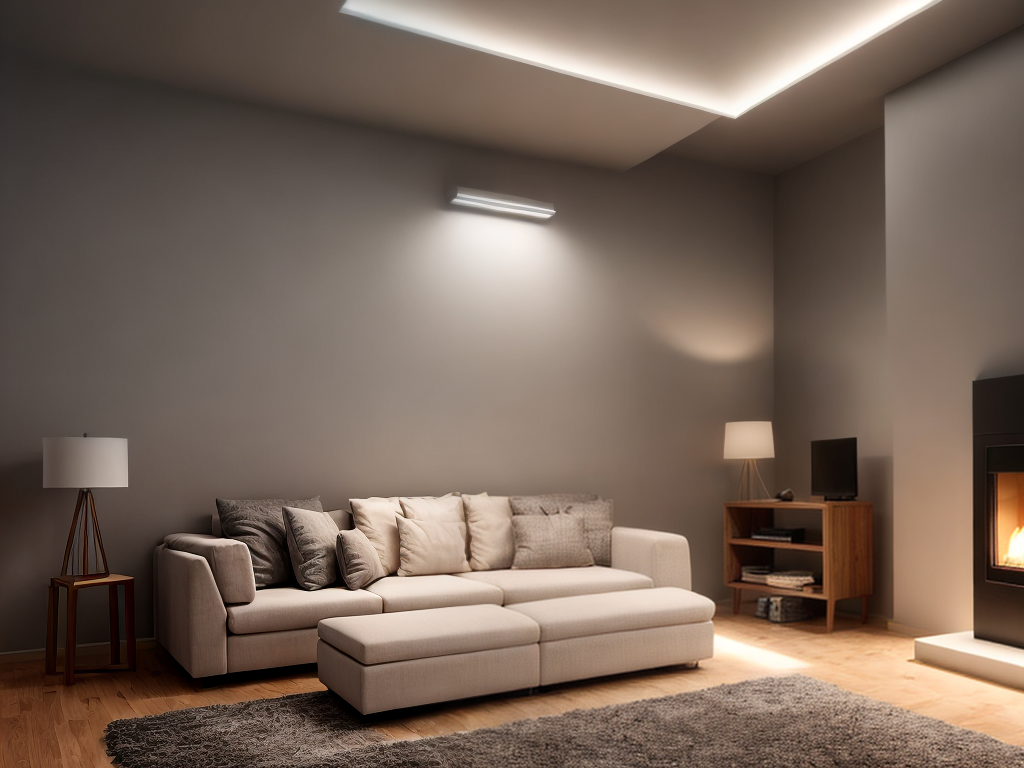So you’re looking to bring some energy-efficient lighting into your home? Well, look no further! In this guide, I’ll show you the ins and outs of retrofitting your home with LED lights. LED lights are a game-changer when it comes to saving energy and reducing your electricity bill. By swapping out your old incandescent bulbs for LED ones, you’ll not only be doing your part for the environment but also enjoying brighter and longer-lasting lighting. From choosing the right bulbs to calculating energy savings, I’ll walk you through each step of the process. So let’s get started and transform your home into a well-lit haven of energy efficiency!
Key Takeaways
- Retrofitting with LED lights can lead to significant cost savings on monthly energy bills.
- LED lights have a longer lifespan, reducing the need for frequent replacements.
- LED lights use up to 80% less energy than traditional incandescent bulbs.
- LED lights are environmentally friendly, containing no toxic materials like mercury.
Benefits of Retrofitting With LED Lights
One of the main benefits of retrofitting my home with LED lights was the significant reduction in my monthly energy bills. LED lights are highly energy-efficient, using up to 80% less energy than traditional incandescent bulbs. This translates into substantial cost savings over time. Not only did my electricity bills decrease noticeably, but the longevity of LED lights also meant that I didn’t have to replace them as often, further reducing expenses. Additionally, retrofitting with LED lights has a positive environmental impact. LED lights produce less heat, reducing the need for air conditioning, and they contain no toxic materials such as mercury. By choosing LED lights, I not only saved money but also contributed to a greener and more sustainable future.
Choosing the Right LED Bulbs for Your Home
When it comes to choosing the right LED bulbs for your home, there are two important factors to consider: wattage and brightness comparison, and color temperature options. Wattage and brightness comparison allows you to determine the amount of light output you need, while color temperature options help create the desired ambiance in your space. By understanding these points, you can make informed decisions and find the perfect LED bulbs for your home.
Wattage and Brightness Comparison
I found that comparing the wattage and brightness of LED bulbs is essential when choosing the right ones for my home. Here are some key points to consider:
- Wattage comparison: LED bulbs come in different wattages, and it’s important to choose the right wattage for your needs. Lower wattage bulbs are more energy-efficient, but they may not provide the same level of brightness as higher wattage ones.
- Brightness levels: LED bulbs have a brightness rating measured in lumens. It’s crucial to determine the desired brightness level for each room in your home. For example, a living room might require brighter bulbs than a bedroom.
- Efficiency: LED bulbs are known for their energy efficiency, so make sure to choose bulbs with a high lumens per watt ratio. This will ensure that you get the most light output for the least amount of energy consumed.
- Color temperature: LED bulbs come in different color temperatures, ranging from warm white to cool white. Consider the ambiance you want to create in each room and choose the color temperature accordingly.
- Dimmability: If you have dimmer switches in your home, make sure to choose LED bulbs that are compatible with dimming. Not all LED bulbs can be dimmed, so check the packaging or consult with a lighting professional.
Color Temperature Options
After comparing wattage and brightness, the next important aspect to consider when choosing LED bulbs for your home is the color temperature options available. Color temperature refers to the appearance of light emitted by the bulb, ranging from warm to cool tones. It is crucial to understand how color temperature can impact the overall lighting design in your home. Warm tones, with a color temperature of around 2700-3000K, create a cozy and inviting atmosphere, perfect for bedrooms and living rooms. On the other hand, cool tones, around 4000-5000K, provide a brighter and more energizing light, ideal for kitchens and workspaces. Choosing the right color temperature not only enhances the aesthetics of your space but also ensures energy efficiency, as LED bulbs consume less energy compared to traditional incandescent bulbs. So, consider the color temperature options carefully to create a well-designed and energy-efficient lighting scheme in your home.
Assessing and Planning Your Lighting Needs
When it comes to assessing your lighting needs, there are a few techniques you can use to determine the best approach. One method is to evaluate the current lighting in each room and identify any areas that need improvement or additional lighting. Another important consideration is choosing appropriate light fixtures that will not only provide the right amount of light but also complement the overall aesthetic of your home.
Lighting Assessment Techniques
Assessing and planning your lighting needs involves conducting a thorough evaluation of your current lighting setup. To ensure an efficient lighting design and reduce energy consumption, here are some techniques to consider:
- Perform a visual inspection of your current lighting fixtures and bulbs to identify any inefficiencies or outdated technology.
- Measure the brightness of your existing lights using a light meter to determine if they meet your desired illumination levels.
- Calculate the energy consumption of your current lighting system by recording the wattage and usage hours of each bulb.
- Consider the color temperature of your lighting, as it can greatly impact the ambiance and functionality of a space.
- Evaluate the distribution of light in your rooms, ensuring that there are no dark spots or excessive glare.
Choosing Appropriate Light Fixtures
To begin the process of choosing appropriate light fixtures, I start by evaluating my current lighting setup and determining my lighting needs. This step is crucial in ensuring that I select the right fixtures for my home. First, I assess the existing fixtures and determine if any need to be replaced or upgraded. I also consider the type of lighting I want in each room – whether it is task lighting, ambient lighting, or accent lighting. Once I have a clear understanding of my lighting needs, I can then explore the various light fixture options available. It is important to consider energy efficient lighting options, such as LED lights, as they not only help reduce energy consumption but also have a longer lifespan. When it comes to light fixture installation, I can either hire a professional or choose to do it myself, depending on my comfort level with electrical work.
Calculating Energy Savings With LED Lights
I saved significant energy by retrofitting my home with LED lights. The energy efficiency of LED lights is remarkable, resulting in substantial cost savings. Here are some key factors to consider when calculating your energy savings with LED lights:
- Wattage reduction: LED lights use significantly less wattage compared to traditional incandescent bulbs, resulting in immediate energy savings.
- Long lifespan: LED lights have a longer lifespan, which means fewer replacements and lower maintenance costs.
- Dimmability: LED lights can be easily dimmed, allowing for even more energy savings when the full brightness is not required.
- Directional lighting: LED lights provide focused and directional lighting, reducing wasted light and focusing the illumination where it is needed.
- Instant on/off: Unlike CFL bulbs, LED lights turn on instantly, making them more energy-efficient and convenient.
Removing and Replacing Existing Light Fixtures
I swapped out my old light fixtures for new LED fixtures. Before installing the LED fixtures, I had to remove the existing fixtures from my home. To do this, I turned off the power to the fixtures at the circuit breaker. Then, I carefully unscrewed the fixtures from the ceiling or walls, making sure not to damage any wiring. Once the fixtures were removed, I properly disposed of them according to local regulations. This typically involves taking them to a recycling center or contacting a hazardous waste disposal facility. Proper disposal is important to prevent any potential harm to the environment. With the old fixtures removed, I was ready to install my new LED fixtures and enjoy the benefits of energy-efficient lighting.
Installing LED Retrofit Kits
How can one easily install LED retrofit kits in their home? The LED retrofit installation process is straightforward and can be done by following a few simple steps:
- Assess the existing lighting fixtures and determine the type and size of retrofit kits needed.
- Turn off the power supply to the fixtures and remove the old bulbs.
- Install the LED retrofit kits by connecting the wiring and securing them in place.
- Turn on the power supply and test the new LED lights to ensure they are functioning properly.
- Calculate the cost of installing LED retrofit kits by considering the number of fixtures and the price of the kits.
Installing LED retrofit kits is a cost-effective way to upgrade your home’s lighting system and save energy. With a little knowledge and some basic tools, you can easily complete the installation process and enjoy the benefits of energy-efficient LED lighting.
Tips for Maximizing the Efficiency of LED Lighting
To optimize the efficiency of LED lighting, it is important to consider proper maintenance and usage habits. By following these tips, you can maximize energy efficiency and reduce electricity costs.
| Maintenance | Usage Habits | Savings |
|---|---|---|
| Clean the fixtures regularly | Turn off lights when not in use | Reduce electricity costs |
| Replace burnt-out bulbs promptly | Use dimmers or timers for appropriate lighting levels | Maximize energy efficiency |
| Check for loose connections and fix them | Utilize natural light whenever possible | Save money on utility bills |
| Ensure proper ventilation around the fixtures | Consider motion sensors for areas with infrequent use | Lower environmental impact |
| Update outdated fixtures for better energy efficiency | Group lights by zones and control them separately | Extend the lifespan of LED bulbs |




